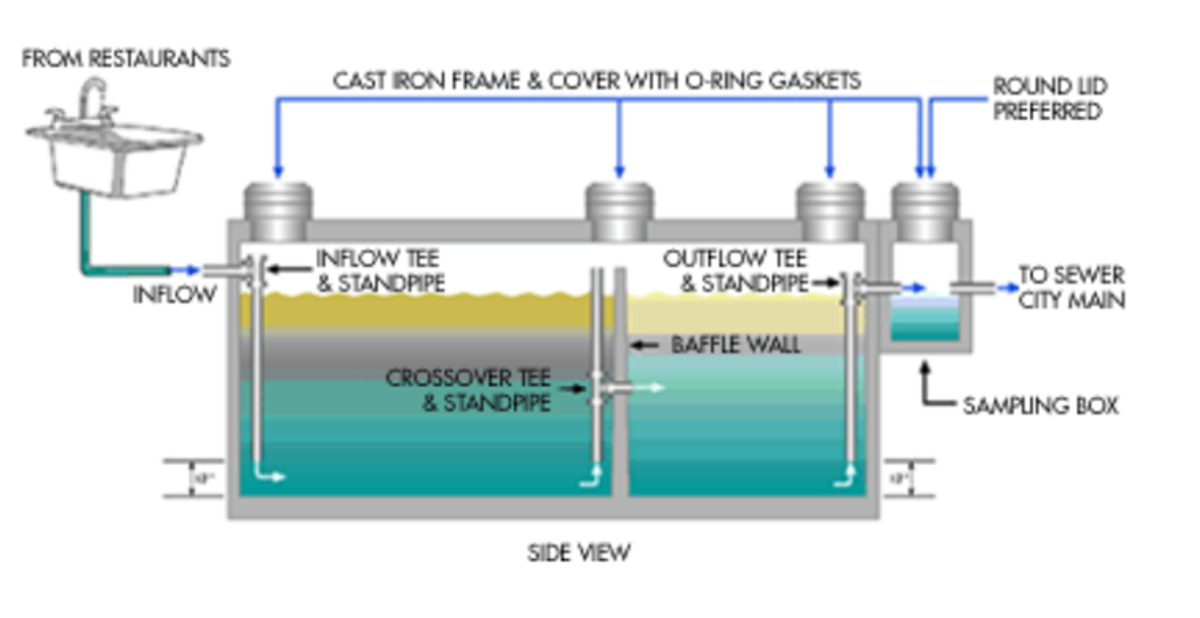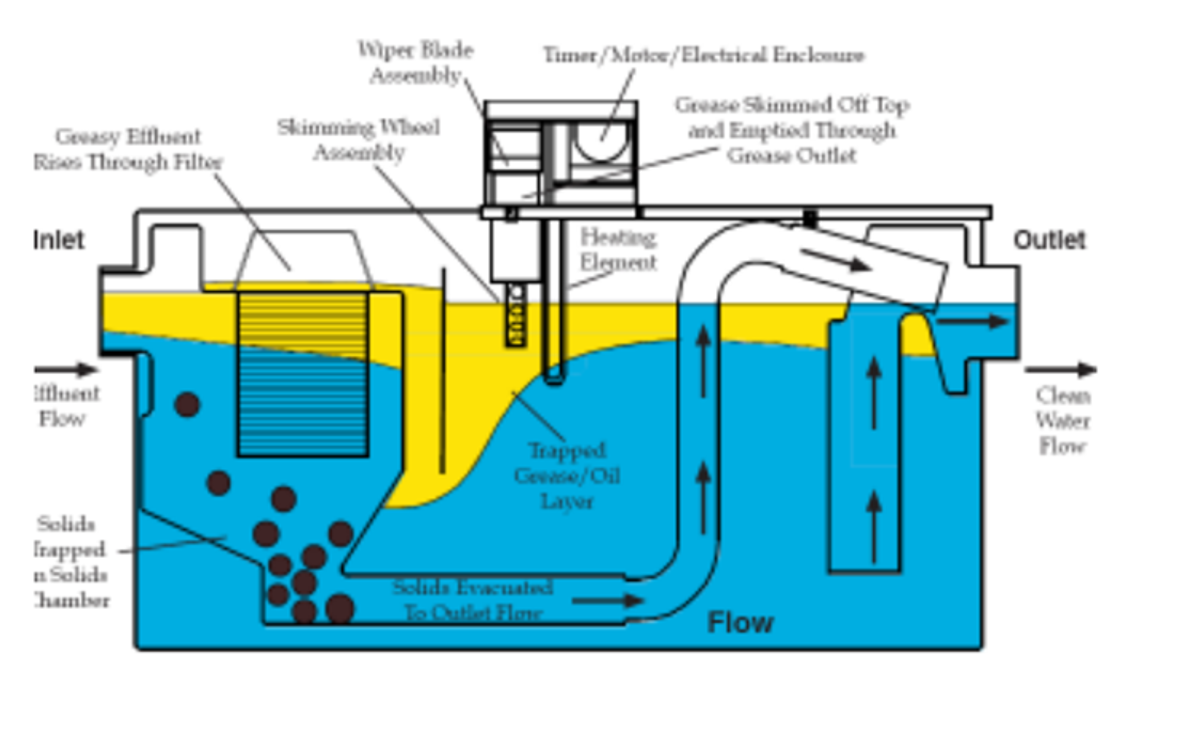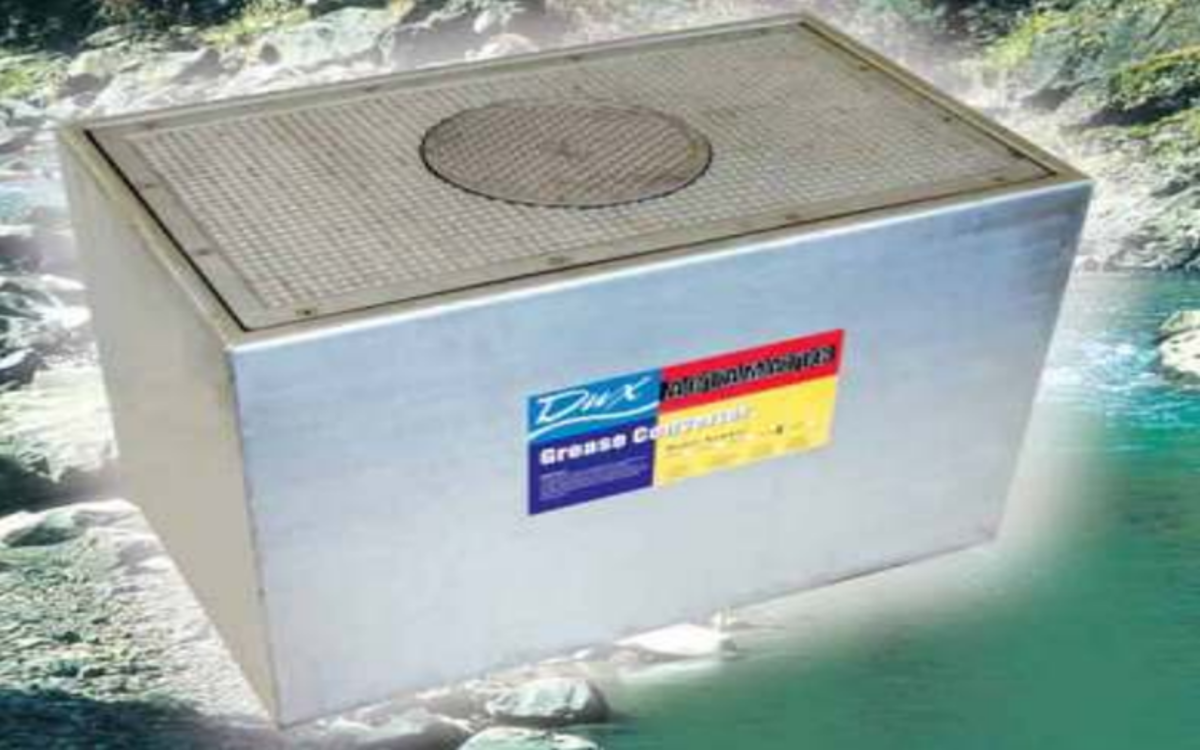Food businesses and trade waste
Restaurants and other food businesses produce wastewater with grease, fats, oils and solids, which can cause issues in our sewer system, like blockages and health hazards.
Even though each business might not produce much, together they can have a big impact in Kāpiti.
To make things run smoothly, Council has rules about how food businesses can get rid of this wastewater, and you’ll need to follow these rules and get a permit before you do it.

Trade Waste Bylaw
Council’s Trade Waste Bylaw 2019 helps protect our pipes and the environment. It lets businesses put their liquid waste into the Council’s sewer system, but only if they follow the rules.
Waste management plan
All food businesses must have a plan for managing their waste. Here are some tips for a good plan:
- Scrape food bits off dishes before washing them.
- Don’t pour cooking oil down the sink. You might be able to recycle it instead.
- Use tinfoil to collect spills around stoves and fryers, and change it regularly.
- Use only as much oil and grease as you need for cooking.
- Use a strainer at your sink, and clean it regularly.
- Follow the instructions on cleaning products, and use biodegradable ones.
- Recycle paper, cardboard, plastic and glass separately.
- Recycle your used cooking oil.
You could also include a paragraph saying “Our grease trap is cleaned monthly/weekly. We have a contract with [name and phone number].”
Your responsibilities
You must keep your grease trap clean, and have proof it's being looked after. If you don't follow these rules, you could be responsible for fixing any problems you cause in the sewer.
Grease traps
A grease trap catches grease, fats, and oils from your wastewater. There are different kinds, but they all work to stop these things from going into the sewer.
When you maintain your grease trap properly, you’ll end up with very little waste in your wastewater going to the sewer.
Alternatives

See larger image [PNG 112 KB].
You can also use other systems instead of a grease trap, but they need to work well and be approved by the Council.
Semi-mechanical grease removal systems – Big Dipper
You can install these below your work bench. They’re removable, so if you move premises you can take them with you. These units also allow you to recover waste oil for recycling.

See larger image [PNG 138 KB].
Enzymatic type grease removal systems – grease converter
You can install these as under-bench units. The enzymes effectively eat waste and fats before discharging to the sewer. You’ll need to look after the automatic enzyme dosing system.
You’ll need to clean the filaments in these systems every three months, so the unit will need to be accessible.
The unit is removable, so if you move premises you can take it with you.

See larger image [PNG 680 KB].
Maintenance
You'll need the services of a specialist contractor to clean your grease trap regularly, normally every three to four months. This is to avoid problems like blockages or bad smells. It's your waste manager's responsibility to keep updated records of all maintenance and cleaning.
There are different ways to clean grease traps. You can hire specialists who might use a “sump-truck” to clean it out.
Make sure to keep the receipts from this cleaning as part of your records. This helps Council see you're taking care of things, and can also protect you if there's a problem with the drain.
When you hire someone to clean your grease trap regularly, make sure you talk about:
- how they’ll clean it and how often
- your address
- where the trap is, how big it is, and the number of chambers it has
- making sure inspection holes are cleaned and the trap walls are hosed down
- whether refilling the trap with cold water is part of the contract.
After your trap is cleaned, if the contractor doesn’t refill the grease trap, you’ll need to do this. Just let the cold tap in your sink run for a bit until the trap is filled up again. This helps it do its job properly.
Recycling cooking oils
You might be able to recycle your cooking oils, and some places might even pay you, depending on how much and how good they are.
Usually the recycling company will give you containers for the used fat or oil, and pick them up when they’re full. Grease removal systems also usually produce used oils that can be recycled.
Keep your used fat or oil in a sealed container and away from food, to stop any smells or pests. Make sure the area is clean and tidy.
There are also special systems that clean up fats and oils so they can be used again, which helps cut down on waste.
Inspections
Council staff check all grease traps at least once a year, and it doesn’t cost the business owner.
If we find the grease trap isn’t doing its job, or cleaning records aren’t complete, we’ll need to carry out another inspection a short time later.
Second inspection
If we still find problems on the second inspection:
- Council will inspect the trap regularly until cleaning and records improve
- we may charge you a higher consent fee
- we may also test your trade waste, and pass these charges on to you.
You’ll save money by making sure your waste is under control and following the rules from the start.
Applying to discharge trade waste
You’ll need to apply for Council permission to discharge your trade waste. You should also check our Trade waste consent fees.
- Complete our application form – either Trade waste application [DOTX 186 KB] or Trade waste application [PDF 191 KB].
- Return your completed form to Council.
- We’ll:
-
- check what waste your business produces
- talk to you about any problems
- visit your business to check things out.
Contact
If you need more information or help, email our Compliance duty officer, or call us and ask to speak to the Duty Compliance Officer.